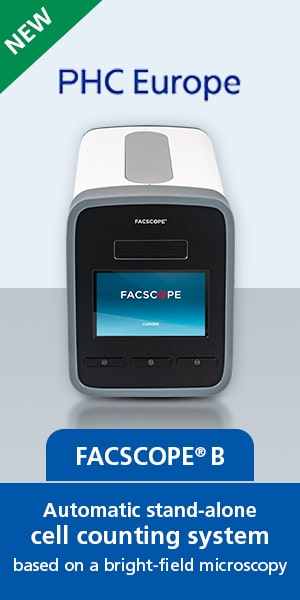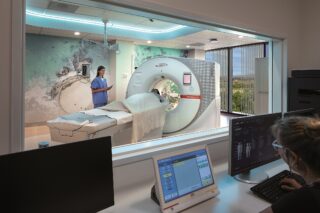As current therapies for Alzheimer’s disease focus on preventing cognitive decline and treating symptoms rather than a cure, it is critical to determine amyloid pathology early in the Alzheimer’s disease spectrum at the MCI stage. CSF measurements or amyloid PET alongside clinical diagnosis provide greater accuracy in determining amyloid status than clinical diagnosis with only cognitive screening tests.
Authors: Rianne Esquivel (Scientific Affairs Manager, Fujirebio Diagnostics Inc, Malvern, USA) and Nathalie Le Bastard (Marketing Manager, Fujirebio Europe, Gent, Belgium).
Many disease subtypes exist under the umbrella of dementia, with Alzheimer’s disease (AD) being the most common. AD-related dementia is characterized by neuropathological changes in the brain. Amyloid plaques and tangles made of hyperphosphorylated tau build up in the brain and are hallmarks of the disease. The presence of these neuropathological changes is necessary for a true AD diagnosis.
Problems with Cognitive Assessment and Clinical Workup in AD Diagnosis
Because of this requirement, the true gold standard for AD diagnosis can only occur upon autopsy. Currently, differential diagnosis is used to assess early onset of dementia for the millions of patients suffering from early symptoms of memory loss and cognitive complaints. Thus, for the last 45 years, clinicians have relied primarily on a cognitive assessment including cognitive screening tests alongside a clinical workup to diagnose AD (Dubois et al., 2021).
While clinical diagnosis relying primarily on cognitive tests can reach 70% to 90% accuracy in late stages of AD, it is much less accurate in early stages of mild cognitive impairment (MCI) due to AD, and it is well known that MCI can have many pathological causes unrelated to AD (Breton et al., 2019; Schneider et al., 2009). Additionally, differentiating AD from non-Alzheimer’s (non-AD)-related dementias is challenging with cognitive screening tests alone.

The inaccuracy of clinical diagnosis utilizing only cognitive tests to diagnose early AD has been observed by comparing neuropathological results after autopsy (Salmon, 2011; Schneider et al., 2009), indicating that symptomatology and cognitive tests alone cannot be used to reliably diagnose early AD.
As clinical diagnosis improves further along the AD spectrum, longitudinal analysis may be used to determine whether cognitive screening tests accurately predict conversion to AD dementia from MCI. While this is not the intended use of cognitive tests, that is what they are tasked with if used to diagnose AD at the MCI stage.
Recent Advancements in Diagnostic Tools (CSF and PET)
In more recent years, amyloid PET (positron emission tomography) and CSF (cerebrospinal fluid) testing have emerged as important tools to determine the presence of amyloid pathology. Amyloid PET is used to estimate β-amyloid neuritic plaque density in adult patients’ brains with cognitive impairment who are being evaluated for AD and other causes of cognitive decline. CSF biomarker testing utilizes four core biomarkers; 2 β-amyloid biomarkers (Aβ1-42 and Aβ1-40 as part of the Aβ1-42/Aβ1-40 ratio), and 2 Tau biomarkers (pTau and tTau) to determine amyloid status and the presence of other AD-related pathological changes.
The importance of correctly identifying the neurobiological cause of the dementia is critical when considering which patients to enroll in clinical trials to develop novel therapies and which patients will benefit from amyloid and tau targeted therapies. As current therapies focus on preventing cognitive decline and treating symptoms rather than a cure, it is critical to determine amyloid pathology early in the AD spectrum at the MCI stage. For those patients who do not have AD dementia, it is critical to avoid unwanted side effects from mistargeted drugs as well as to gain access to treatments that may be warranted for other causes of cognitive decline.
To this end, we have reviewed available literature on the accuracy of the underlying pathological determinations in mild cognitive impairment (MCI) and non-AD patients during clinical diagnosis and how amyloid PET and CSF testing can influence an accurate amyloid status determination. In summary, CSF measurements or amyloid PET alongside clinical diagnosis provides greater accuracy in determining amyloid status than clinical diagnosis with only cognitive screening tests. If you would like to know more about this topic, please visit our website.
References:
A World-Leading Hub for Expertise in Neurodegenerative Disease Diagnostics
The Fujirebio Neuro Centre of Excellence has been founded to help tackle the challenges of neurodegenerative diseases like Alzheimer’s and Parkinson’s. It is a knowledge-sharing meeting point between our expert teams, and neuro professionals and serves as a catalyst for collaborations and partnerships with laboratories, CDMOs, pharma companies, clinicians, researchers, and academia worldwide. Next to being a ray of hope for patients, families, and caregivers.
Contact us:
Fujirebio Neuro Center of Excellence
Technologiepark 6
9052 Gent, Belgium
+32 9 329 13 29
+32 9 329 19 11
FNCE@fujirebio.com










